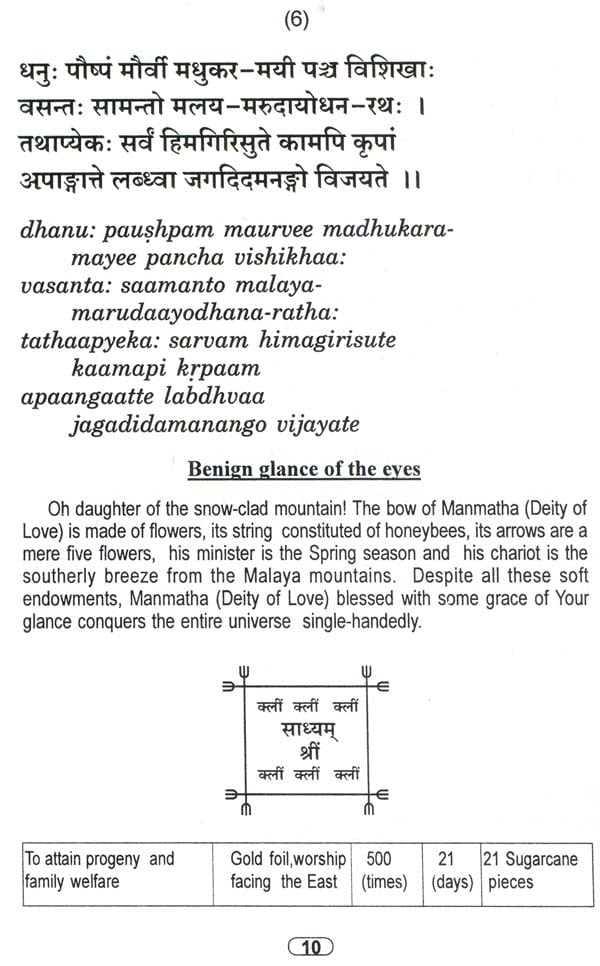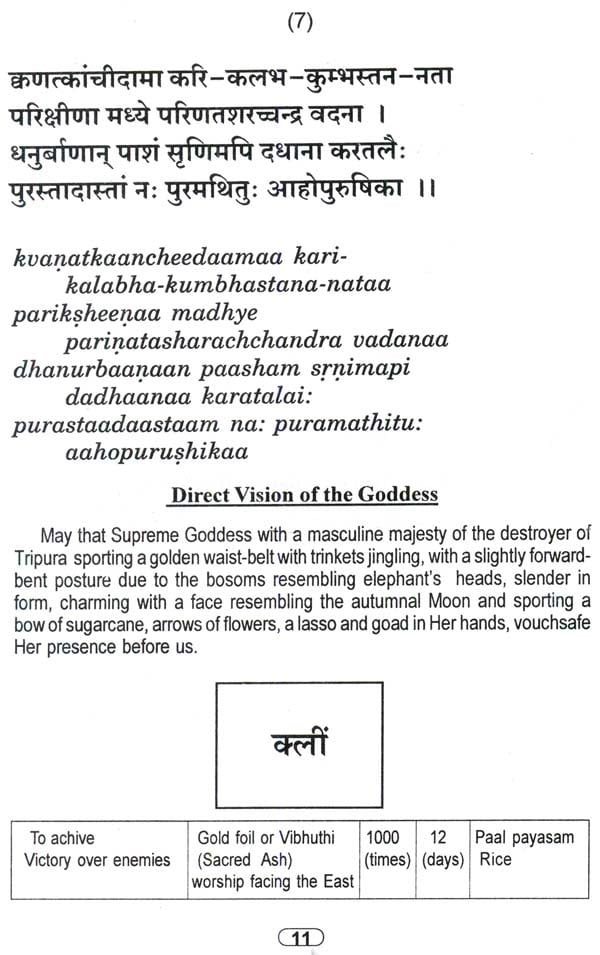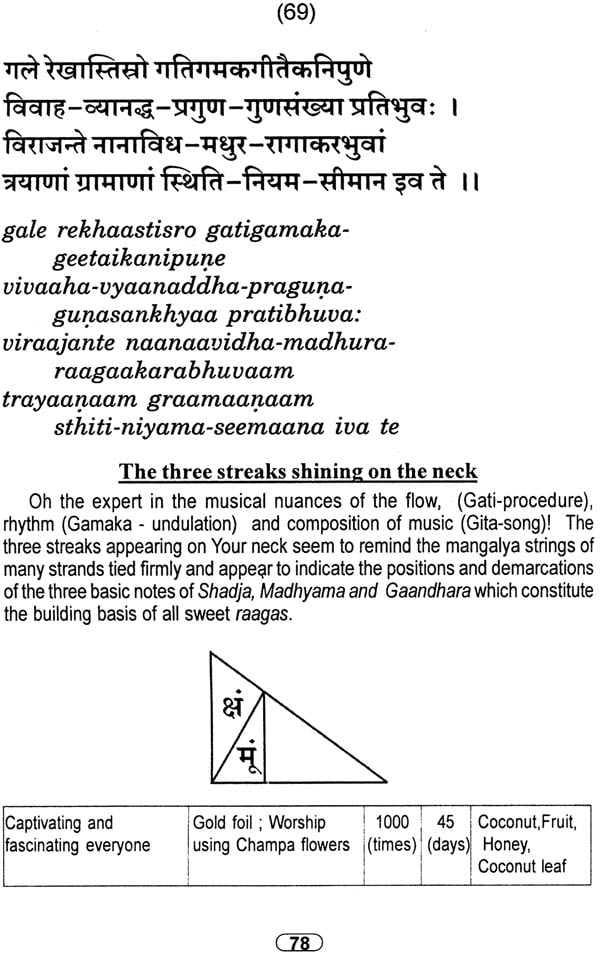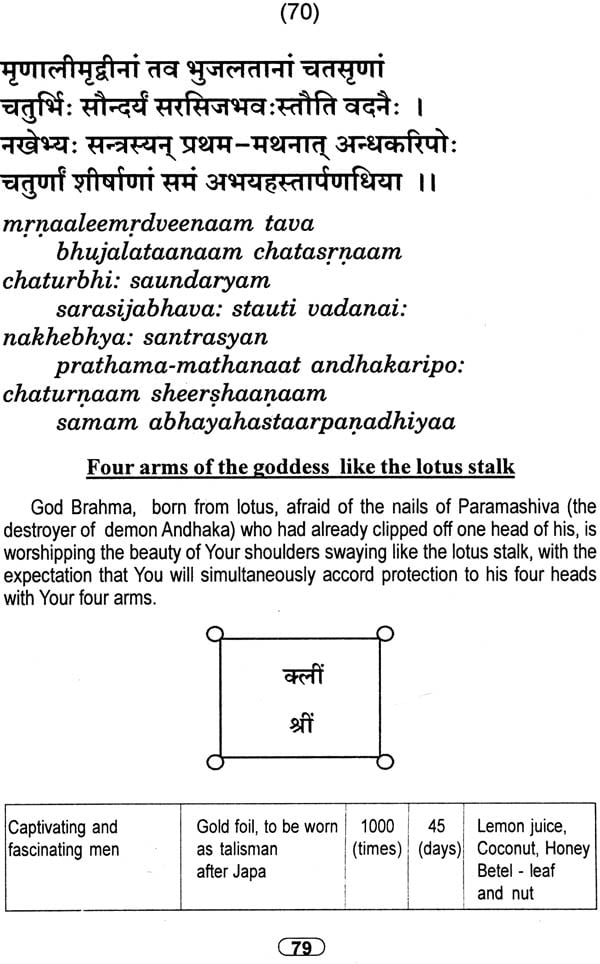
Sri Saundarya Lahari (Sanskrit Text with Transliteration and English Translation)
Book Specification
| Item Code: | NAH227 |
| Author: | Shri A.R Parthasarathy |
| Publisher: | Giri Trading Agency Pvt Ltd, Chennai |
| Edition: | 2015 |
| ISBN: | 9788179505007 |
| Pages: | 122 |
| Cover: | PAPERBACK |
| Other Details | 8.5 inch X 5.5 inch |
| Weight | 120 gm |
Book Description
Publisher’s Note
All the great Aacharyas who have nourished the Indian soil with their religious outpourings deeply embeded in philosophy, were of a strong opinion that principle and personality should go hand - in - hand. Even the greatest Advaitic notion of the unity of Atman and Brahman must be clothed in personal worship of a deity for an ordinary man to understand.
Aachaarya Shankara was the foremost luminary in the Indian religio-philosophical screen, who was not just a brilliant philosopher - commentator (Bhaashyakaara) but also a devotee par-excellence, who established the six-fold path of worship (Shanmata-Sthaapanacharya)
Shankaracharya bequethed to mankind innumerable stotras, which were religious yet soaked in philosophical nectar. Saundaryalahari has earned a very high place amongst his works,not only for its lyrical beauty, but also for the details it gives regarding Mantra- Shaastra, especially Shaakta.
There is a legend regarding the origin of the Saundaryalahari. When Shankara visited Kailaasa, he was gifted with the manuscript of Saundaryalahari and five sphatika lingas. Lord Nandi, unwilling to part with the esoteric verses took back 3 part of it. Shri Sankara completed the remaining part upon coming back to bhuloka(earth), hence the distinction between the first 41 verses called Aanandalahari which is a treasure-house of information on Srividya and Saundaryalahari starting from verse 42 which is lyrical and extols the beauty and greatness of Mother Tripurasundari.
This text has several commentaries by stalwarts of Srividya such as Bhaskaraaya, Lakshmidhara, Kaivalyaashrama etc.
Giving the text both in Devanagari and Roman script and a lucid translation in English along with the Prayoga for each mantra is an attempt from the giri house, who have always strived to bring the tradition closer to the modern generation.
We thank Shri. A. R. Parthasarathy for giving a beautiful running translation of the text.
We also express our indebtness to Dr. P. Ramachandrasekhar, for his editorial work and for providing additional brief notes to certain verses of Aanandalahari, along with the prayoga for each Shloka.
We request the readers to kindly get initiated from a guru before indulging in Japa, because only with a proper Upadesha the mantras gain potency. We also caution the readers from indulging in any prayoga other than common welfare of ones family and society at large.









